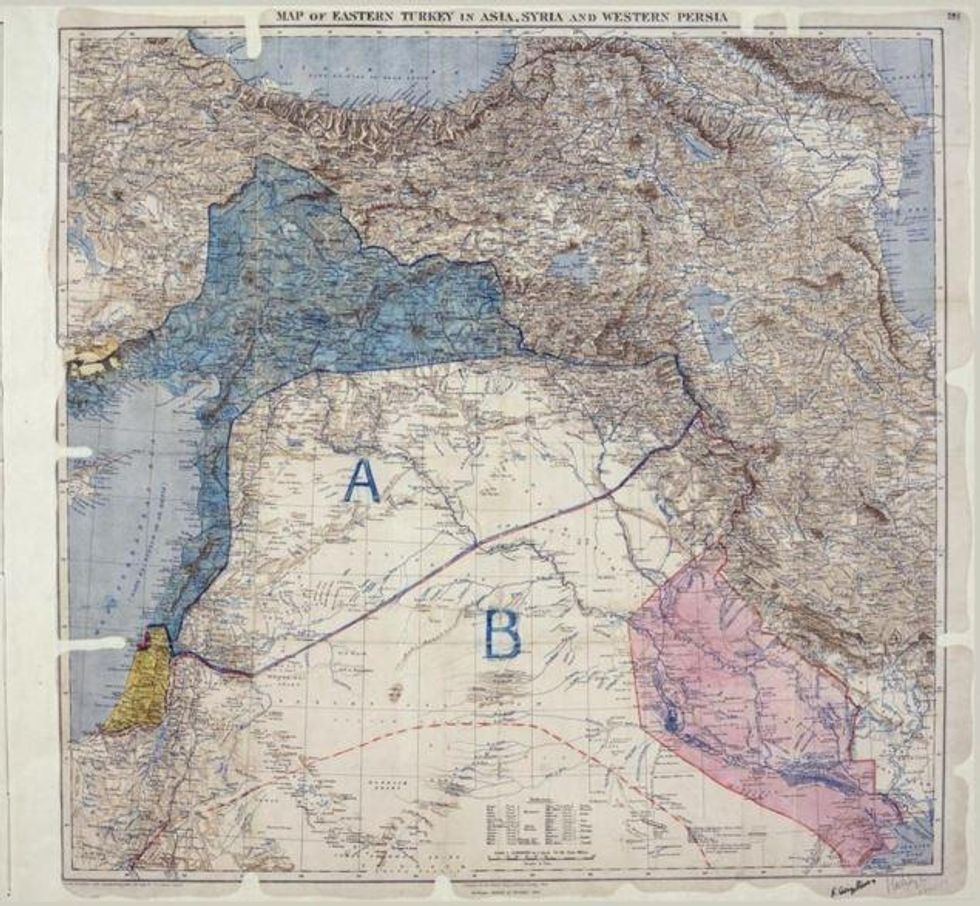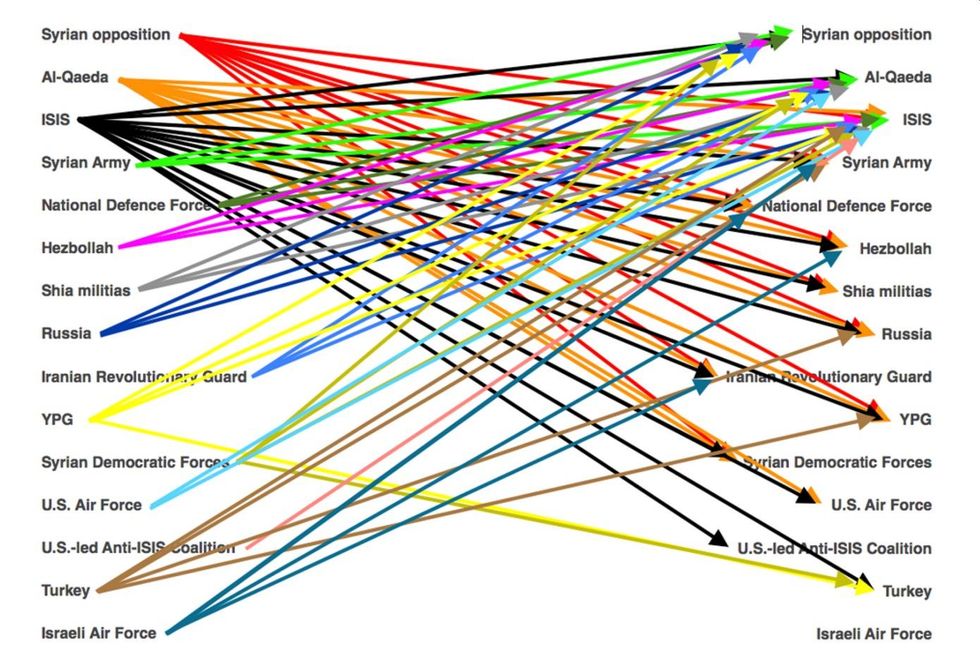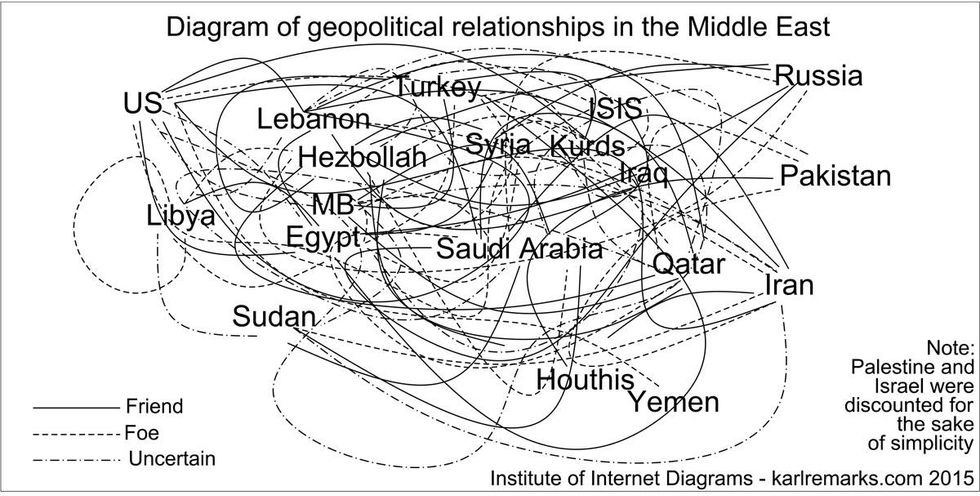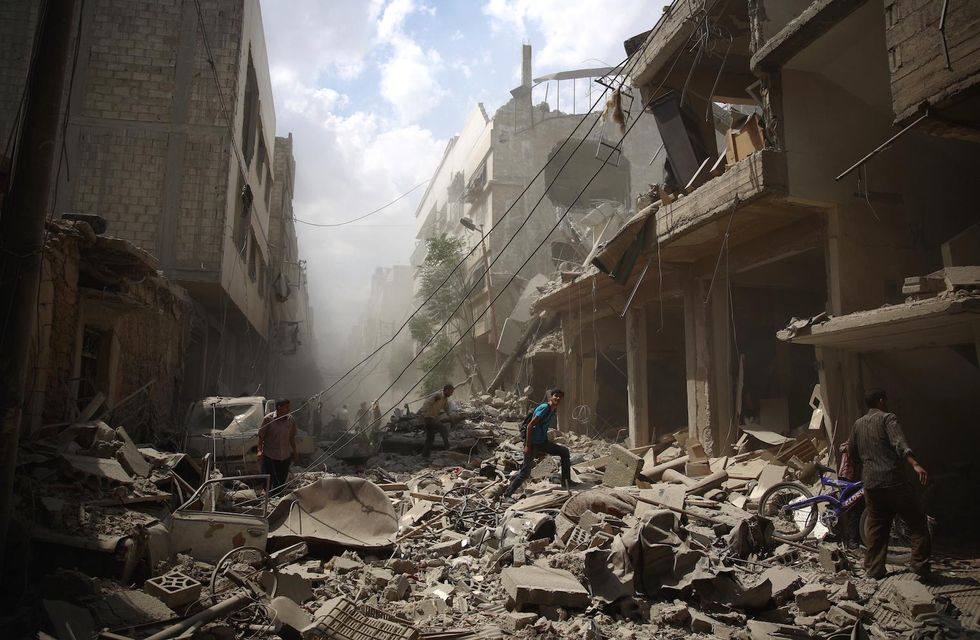News
Louis Dor
May 07, 2016
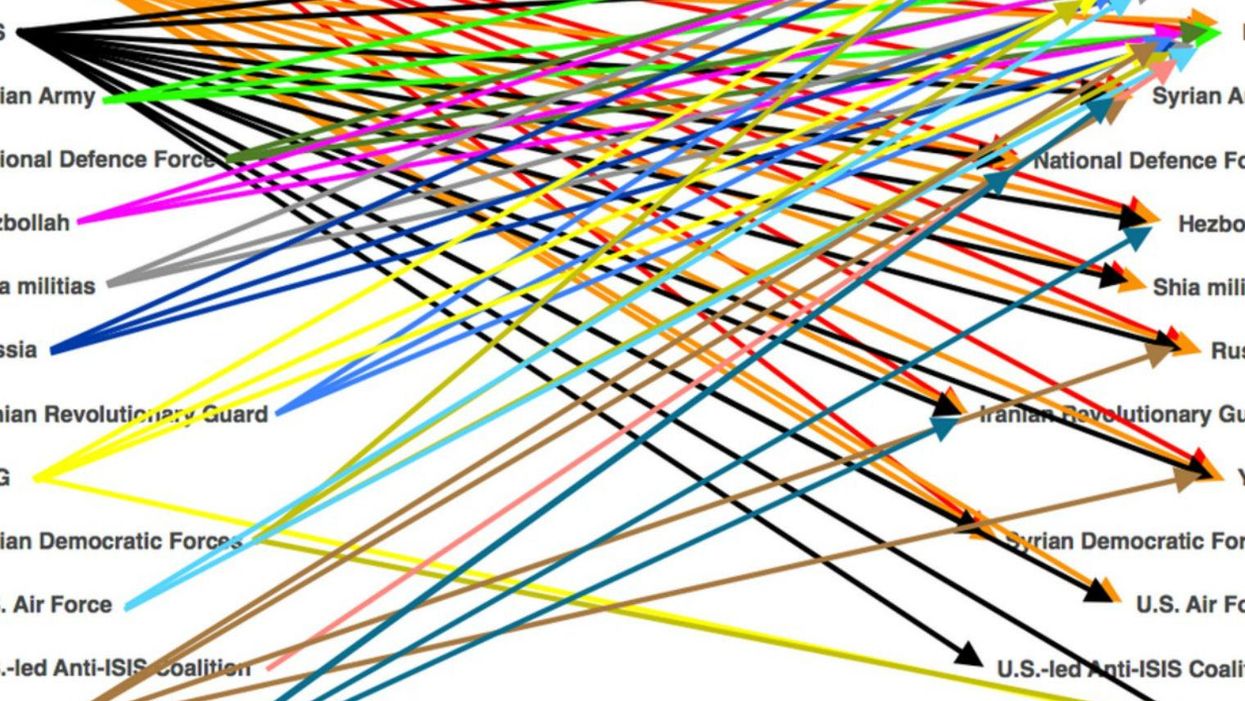
The civil war in Syria, fought by a range of forces, can be a complex topic for a beginner.
A contributing factor to the current conflict is widely held to be the Sykes-Picot Agreement, which arbitrarily drew the borders between Syria and Iraq, and is turning 100 this month.
The agreement was a deal struck between the French and British during WWI to divvy up the conquered Ottoman Empire into spheres of British and French influence at the end of the war,
Today, its effects are still being felt in Syria. Thankfully Charles Lister, a fellow of the Middle East Institute, has summarised the conflict with this "simple" chart showing the forces who are fighting each other in the country.
Lister recently tweeted the colour coded chart of hostilities in the region, which are notoriously difficult to keep track of, and it has since received thousands of retweets.
It's probably the most enlightening breakdown since Karl Sharro's (parody) version of the wider Middle East region (which we covered in more detail here)...
Yep, looks like this is being sorted out very soon.
Lister told indy100 why he made the chart in February:
Syria has entered a period of unprecedented complexity in recent weeks, thanks in large part to Western mismanagement of the crisis and a failure to better acquire and manage reliable partners on the ground and a failure to pre-empt the predictable hostile moves of our adversaries on the international stage. I created the chart on a whim, simply to underline what we’ve allowed to develop in recent months - a mess.
Unfortunately, Russia has totally outplayed and outmanoeuvred the US and its allies and there’s very little policy options left for us in the West to rescue some level of leverage inside Syria. Aleppo city and its remaining inhabitants look set to be totally encircled in the near future and submitted to indiscriminate siege, while the much celebrated partner in the US fight against Isis has turned around and worked with Russia’s airforce to destroy the northern opposition in pursuit of their territorial ambitions.
Things literally couldn’t be any worse right now and the only real long-term benefactors of this mess are jihadists - the very people our governments still insist we’re so focused on combating. It’s a sorry state of affairs. All of this instability has serious ripple effects beyond the region too, as Europe should be prepared for refugee flows this year that will spectacularly eclipse those seen in 2015.
Both Russia and the Assad government have categorically denied accusations of war crimes over hospital bombings in Aleppo, one of the last rebel strongholds.
Almost 300 people have been killed in the last two weeks of mounting violence in and around the city, including the bombing of a refugee camp.
A renewed temporary ceasefire was announced on Wednesday.
More: Syria peace talks and Saudi Arabia military movements: Here's what you need to know
More: These are the countries where most journalists were killed in 2015
Top 100
The Conversation (0)
